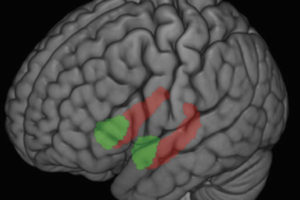Marital stress may make people more vulnerable to depression, according to a recent study by Center for Healthy Minds researchers at the University of Wisconsin–Madison and their colleagues.
The long-term study, published in the April 2014 issue of the journal Psychophysiology, shows that people who experience chronic marital stress are less able to savor positive experiences, a hallmark of depression. They are also more likely to report other depressive symptoms.
The findings are important, says study leader Richard Davidson, UW–Madison William James and Vilas Professor of Psychology and Psychiatry, because they could help researchers understand what makes some people more vulnerable to mental and emotional health challenges.
They might also help scientists develop tools to prevent them.
“This is not an obvious consequence, if you will, of marital stress, but it’s one I think is extraordinarily important because of the cascade of changes that may be associated,” says Davidson, founder of the Center for Healthy Minds. “This is the signature of an emotional style that reveals vulnerability to depression.”
The researchers thought chronic marital stress could provide a good model for how other common daily stressors may lead to depression and similar conditions.
“How is it that a stressor gets under your skin and how does that make some more vulnerable to maladaptive responses?” says UW–Madison graduate student Regina Lapate. She is the paper’s lead author.
For the longitudinal study – part of the National Institute on Aging-funded Midlife in the United States (MIDUS) study directed by Carol Ryff, director of the Institute on Aging at UW-Madison – researchers recruited married adult participants to complete questionnaires rating their stress on a six-point scale.
They were asked questions like how often they felt let down by their partner or how frequently their spouse criticized them. They were also evaluated for depression.
Roughly nine years later, the questionnaire and depression assessments were repeated.
"To paraphrase the bumper sticker: ‘Stress happens.' There is no such thing as leading a life completely buffered from the slings and arrows of everyday life."
In the 11th year of the study, the participants were invited to the laboratory to undergo emotional response testing, a means of measuring their resilience. Resilience, from an emotional perspective, reflects how quickly a person can recover from a negative experience.
The participants were shown 90 images, a mix of negative, neutral and positive photographs such as a smiling mother-daughter pair. The electrical activity of the corrugator supercilii, also known as the frowning muscle, was measured to assess the intensity and duration of their response.
As the nickname suggests, the frowning muscle activates more strongly during a negative response. At rest, the muscle has a basal level of tension but during a positive emotional response, the muscle becomes more relaxed.
Measuring how activated or relaxed the muscle becomes and how long it takes to reach the basal level again is a reliable way to measure emotional response and the tool has been used before to assess depression.
“It’s a nice way to get at what people are experiencing without asking people for their emotional response: ‘How are you feeling?'” Lapate says.
Prior studies have shown that depressed individuals have a fleeting response following positive emotional triggers. Davidson was interested in not just how much a muscle relaxes or tenses when a person looks at an image but also in how long it takes the response to subside.
“If you measure at just one time point, you are losing valuable information,” says Lapate.
Davidson and colleagues found the five to eight seconds following exposure to positive images most significant.
Study participants who reported higher marital stress had shorter-lived responses to positive images than those reporting more satisfaction in their unions. There was no significant difference in the timing of negative responses.
Now, Davidson is interested in how to help people change this weakened ability to enjoy positive experiences, to enable them to become more resilient to stress.
“To paraphrase the bumper sticker: ‘Stress happens,'” says Davidson. “There is no such thing as leading a life completely buffered from the slings and arrows of everyday life.”
By understanding the mechanisms that make individuals more prone to depression and other emotional disturbances, Davidson is hoping to find tools – such as meditation – to stop it from happening in the first place.
“How we can use simple interventions to actually change this response?” he asks. “What can we do to learn to cultivate a more resilient emotional style?”






